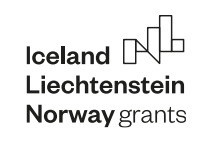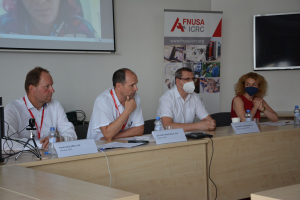The Saste Roma project will teach not only Roma how to take care of their health
How to improve health not only in excluded localities is solved by the project Saste Roma (Healthy Roma), which started in the International Clinical Research Center of St. Anne’s University Hospital Brno. The three-year project aims to increase health literacy about the most serious diseases and a number of experts across the Czech Republic are involved in its solution.
The average life expectancy for Romani men is 57 and for Romani women 65 years. This is approximately 18 years less compared to the majority population. Compared to the majority of the population, Roma also suffer twice as often from multiple diagnoses (more than one serious disease). It is often due to ignorance of how to take care of their health, lack of information and support for lifestyle changes or shyness from visiting a doctor. This should be changed by the Saste Roma project aimed at the prevention of serious diseases in excluded localities, the most frequent inhabitants of which are the Roma.
The result of the almost three-year project will be a number of educational tools, from information brochures, through cultural events, educational e-learning, to a mobile application. “The project will focus on the development, implementation and evaluation of a multi-year health campaign in excluded localities. We will cover the most serious diseases, whether cerebrovascular, cardiovascular, oncological or mental illnesses, “explained Hana Maršálková, head of the Saste Roma project and head of the Public Health group within the Cerebrovascular research program that implements the project. “Online tools, applications and awareness-raising events will also be available and usable for the general public, and we also dedicate a special part to schoolchildren,” added Maršálková.
An expert team is working on the outputs, which now includes about 40 experts from the ranks of doctors, sociologists, educators, health marketing specialists and experts on excluded localities. A number of institutions also took part in the project – several clinics of the St. Anne’s University Hospital Brno, the University Hospital Brno or the Masaryk Memorial Cancer Institute. An important factor of success will also be the involvement of field workers from the State Health Institute, the Regional Hygiene Station or organizations supporting Roma communities.
“Every project focused on the health of the population in socially excluded localities is very much needed and the positive effects on the health of the population are also reflected in the overall improvement of the social situation,” confirms the importance of the project MUDr. Marie Nejedlá, Head of the Public Health Support Center of the State Institute of Public Health. Dr. Nejedlá and her team of field workers will ensure the dissemination of the project’s educational tools directly in the target communities.
“The project will be complemented by a questionnaire survey in the target areas, which map the knowledge and attitudes of the population and also verify how effective the health intervention was. Thanks to the scientific approach, we want to ensure that the project and its follow-up activities will be as effective as possible, “concludes Professor Robert Mikulík, expert guarantor of the project from the St. Anne’s University Hospital Brno and guarantor of the cerebrovascular diseases section.
The Saste Roma project – Developing health in excluded localities is financed from the EEA Funds 2014-2021, project no. ZD-ZDOVA2-002.
The involvement of the SZÚ takes place within the project Effective support of the health of persons at risk of poverty and social exclusion OPZ ESF, reg. No. CZ.03.2.63 / 0.0 / 0.0 / 15_039 / 0009439.



